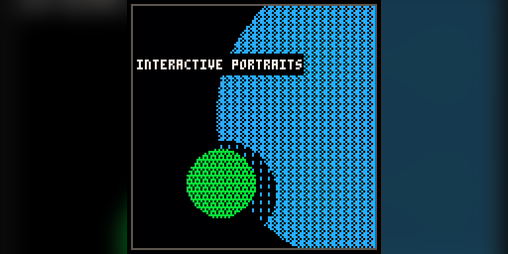- Interactive Portraits: Trans People In Japan Mac Os Download
- Interactive Portraits: Trans People In Japan Mac Os Catalina
This is the SpellCHEX dictionary for online spell checking. Password requirements: 6 to 30 characters long; ASCII characters only (characters found on a standard US keyboard); must contain at least 4 different symbols. . Vibe check and you mac os. OctaneRender 2019 first look - optimized support for NVIDIA RTX Ray Tracing, Vulkan, DXR, CUDA and Metal iOS/Mac OS backends built on OTOY's cross-platform RNDR framework. AI Viewport: mixed reality media, including upscaling, AI style filters, light field and holographic output for next-generation volumetric displays and HMDs.
- Portal 2 is a first-person perspective puzzle game. The player takes the role of Chell in the single-player campaign, as one of two robots—Atlas and P-Body—in the cooperative campaign, or as a simplistic humanoid icon in community-developed puzzles. These three characters can explore and interact with the environment. Characters can withstand limited damage but will die after sustained injury.
- A video game is an electronic game that involves interaction with a user interface or input device – such as a joystick, controller, keyboard, or motion sensing device – to generate visual feedback for a player. This feedback is shown on a video display device, such as a TV set, monitor, touchscreen, or virtual reality headset.Video games are often augmented with audio feedback delivered.

A generation of artists and hackers have emerged on the internet using open source technologies for experiments in art and design.
Walk (703337) mac os. CLOUDS is an interactive documentary and a portrait of this community of digital pioneers, explored through the lens of code. The project asks questions about the future of creativity at a time when algorithms play an important role in shaping culture.
People featured in the film include 40 artists, designers and hackers who participate in the co-creation of free tools for creative expression: Processing and openFrameworks. Reflecting the story of these online communities, the software behind CLOUDS was built in C++ using openFrameworks, and includes real-time interactive visualizations by the artists featured in the documentary.
In its revolutionary hybrid format, somewhere between a documentary, a videogame, and data visualization, CLOUDS allows viewers to navigate a web of ideas. It uses a data-driven Story Engine to present an endless ever-changing conversation, where artists co-exist with their code, presented through real-time interactive visual systems and lush 3D environments.
Return of the tentacle mac os. The project has been presented at prestigious film festivals and museum exhibitions as both an installation and a cinematic experience for a live audience. It's now available as a software application for audiences at home to download and explore on their personal computers, OS X or PC, with the option of viewing in Oculus VR. The techniques explored in CLOUDS suggest a possible future of storytelling that brings interactive graphics, visual effects and cinema closer together.
In the mid 90s, John Maeda led the Aesthetics and Computation Group at the MIT Media Lab: a space for artists and designers experimenting with software. In 2001, Maeda's students Casey Reas and Ben Fry built the foundations of Processing, a java toolkit for artists and designers creating work for the web. Over the next decade, Processing was widely adopted as a teaching tool in universities to introduce students to the art of creative coding, while gaining popularity among professional artists for designing interactive graphics and generative art. In 2005, a C++ language called openFrameworks was initiated by Zach Lieberman, Theo Watson and Arturo Castro. OF was inspired by Processing, while designed for faster real-time 3D graphics, and interactive installations using advanced computer vision. OF is now a popular tool for commercial interactive art and non-commercial projects alike. Both Processing and OF remain completely free and open relying on contributions and code addons from communities of individuals around the world who collaboratively build these software libraries using online repositories such as GitHub. As an international phenomenon, popular in North and South America, Japan and Europe, creative coding is broadly considered the first global art movement of the internet age.
Independent non-profit labs, such as the Studio for Creative Inquiry at Carnegie Mellon, led by Golan Levin, and Eyebeam Art + Technology Center in New York, have supported the work of these open source communities, and supported this documentary.
Announcement of the next major game update
26We are very excited to announce a new major game update today. Based on the feedback we receive every day, we have been working for some time now on a long list of bug fixes, usability improvements and small enhancements to enrich the gaming experience. The update is to be released …
Read more →
Interactive Portraits: Trans People In Japan Mac Os Download
Transport Fever 2 receives Mac and Vulkan support
41We are very happy to officially release the Mac version of Transport Fever 2 together with Good Shepherd Entertainment. Mac users can now start building their own transport empire and join an ever-growing global community of active players. Originally released in December 2019 …
Read more →
Interactive Portraits: Trans People In Japan Mac Os Catalina
Mac version receives official release date
19We are thrilled to announce the official release date of Transport Fever 2 for Mac. Originally released in December 2019, Transport Fever 2 has already been enjoyed by about half a million players from all over the world. The Mac version now completes the platform …
Read more →

